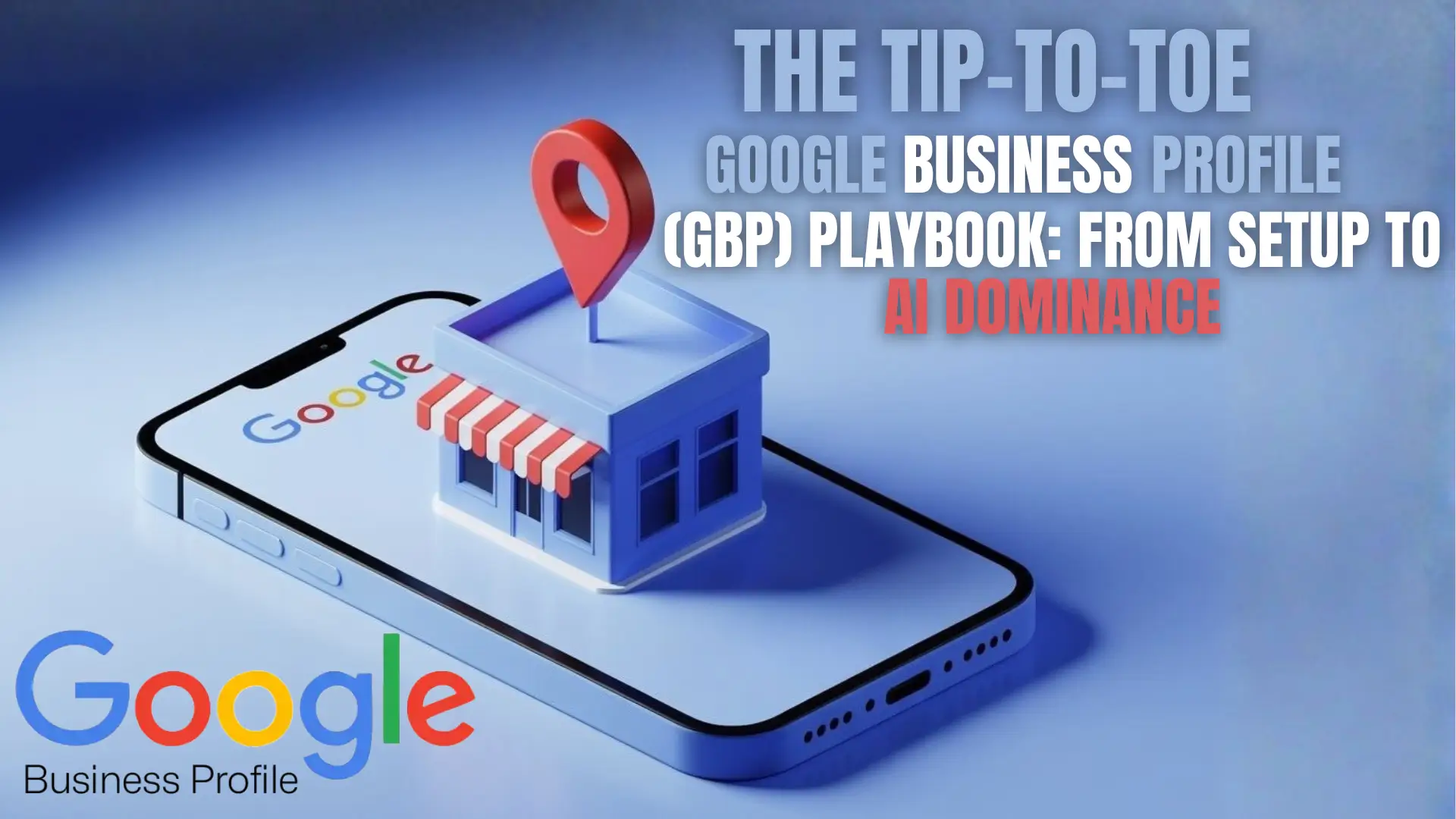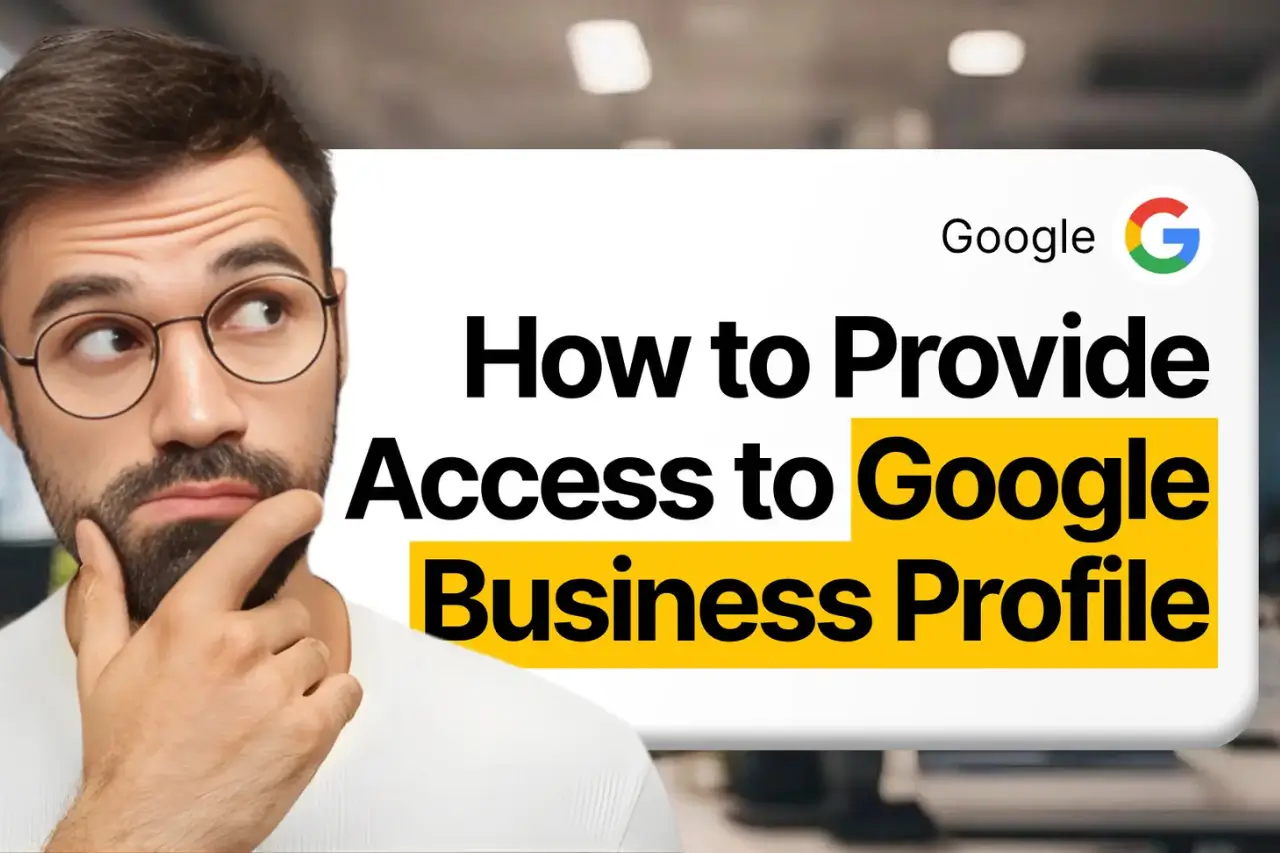Introduction
The AI Shift in Local Search
Stop thinking about "ranking." Start thinking about being the answer.
Google's new AI Overviews and conversational voice search aren't just showing links; they're giving direct, summarized answers. And they're pulling that data straight from your Google Business Profile (GBP), which you may still know by its old name, Google My Business (GMB)."
This isn't a future trend; it's happening now.
The numbers don't lie: Around 20.5% of people worldwide now use voice search. In the United States alone, 153.5 million people are expected to use voice assistants by the end of 2025.
Hi, I'm Avinash, and I've spent the last several years in the trenches of local SEO, optimizing Google Business Profiles for businesses across dozens of industries. I'm not a theorist sitting in an office writing about what "might" work. I'm in the data every single day watching what Google rewards, what AI systems prioritize, and what actually drives phone calls, direction requests, and sales.
This guide? It's not built on speculation or recycled blog posts. Every strategy, every technique, every checklist item comes directly from my client work. These are the exact steps I charge businesses to implement, and they're getting results:
- Clients seeing 2-3x increases in "direction requests" within 60 days
- Businesses that were invisible in local search are now appearing in AI Overviews and voice search results.
- Phone call volume jumping by 40-70% after proper optimization
I'm sharing this playbook publicly because I believe every business, not just those who can afford my consulting fees, deserves to compete in the AI-first search landscape that's already here.
This isn't another "Top 10 GBP Tips" listicle. This is the complete, battle-tested, "tip-to-toe" playbook I use with paying clients. You're getting the same 7-Point AI Optimization Plan, the same mistake-avoidance framework, and the same measurement strategies I deliver in $5,000+ consulting packages.
Follow this guide, and implement these steps methodically. You'll watch your E-E-A-T signals strengthen, your AI visibility explode, and your business become the automatic answer to high-intent local searches.
No fluff. No outdated tactics. Just the real work that separates businesses that dominate local search from those that get buried.
Let's get started.
The Non-Negotiable Foundation (How to Build Your GBP)

Why This Matters for AI: AI hates ambiguity. An incomplete or unverified profile is a "low-trust" signal and will be ignored. This setup is the first step in proving your existence and reliability to Google's AI.
The data speaks volumes: Businesses with complete Google Business Profiles are twice as likely to be seen as trustworthy. Even more impressive: Fully populated, verified profiles surface80% more often in search and generate 4× more website visits, 12% more calls, and 10% more direction requests than incomplete or unverified listings.
Action Plan: Google Business Profile setup
- Step 1: Create or Claim Your Profile
- Go to Google Maps and search for your business name.

- If not, click the menu and select "Add your business to Google.

- Enter your business name
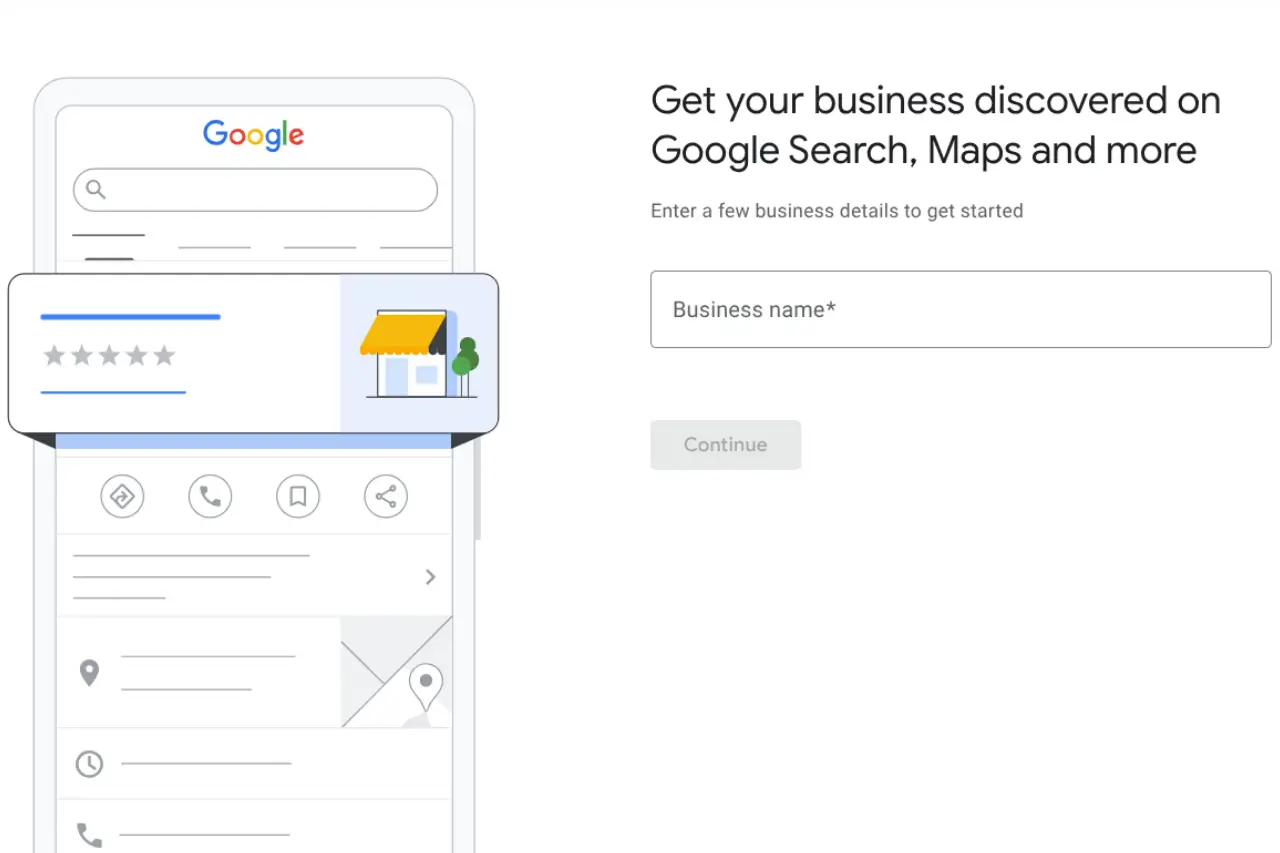
- Choose your business type
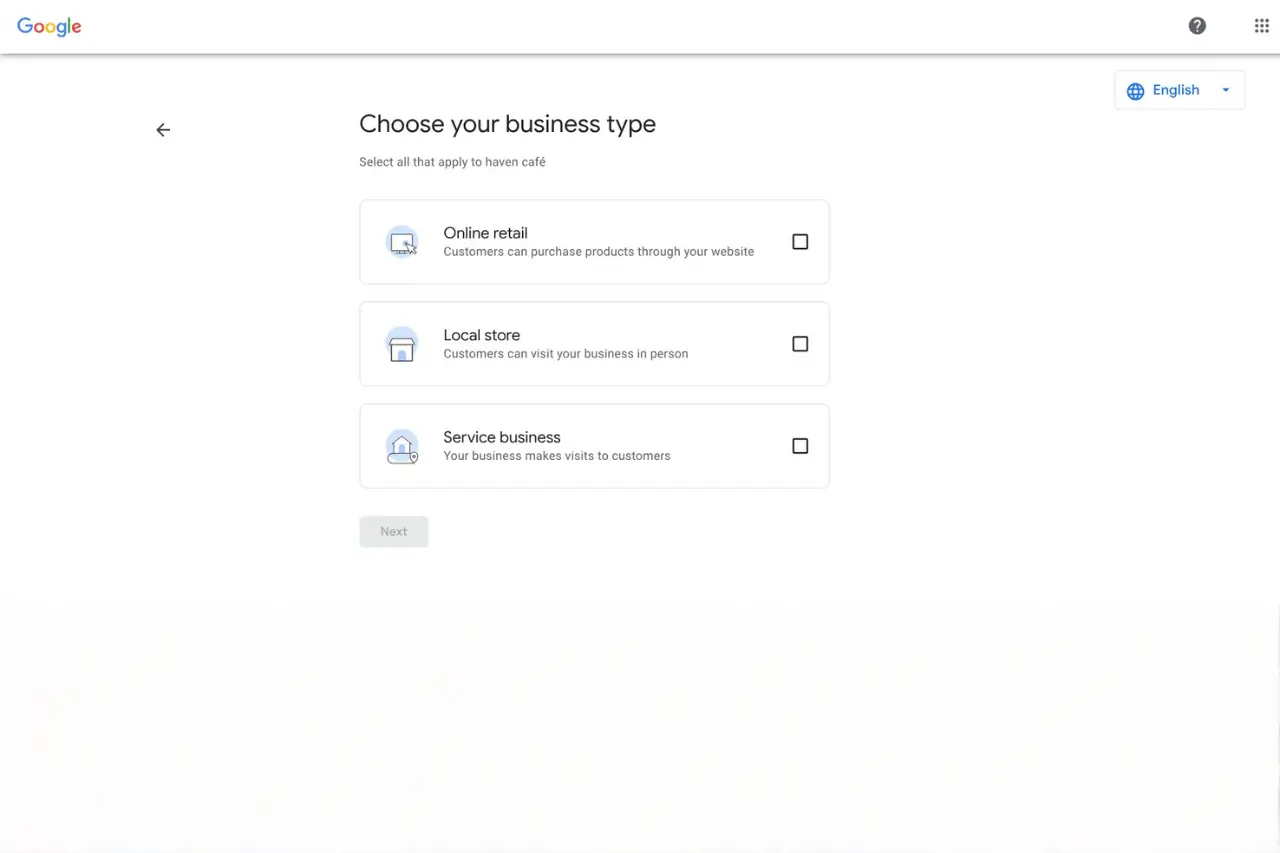
- Enter your business category
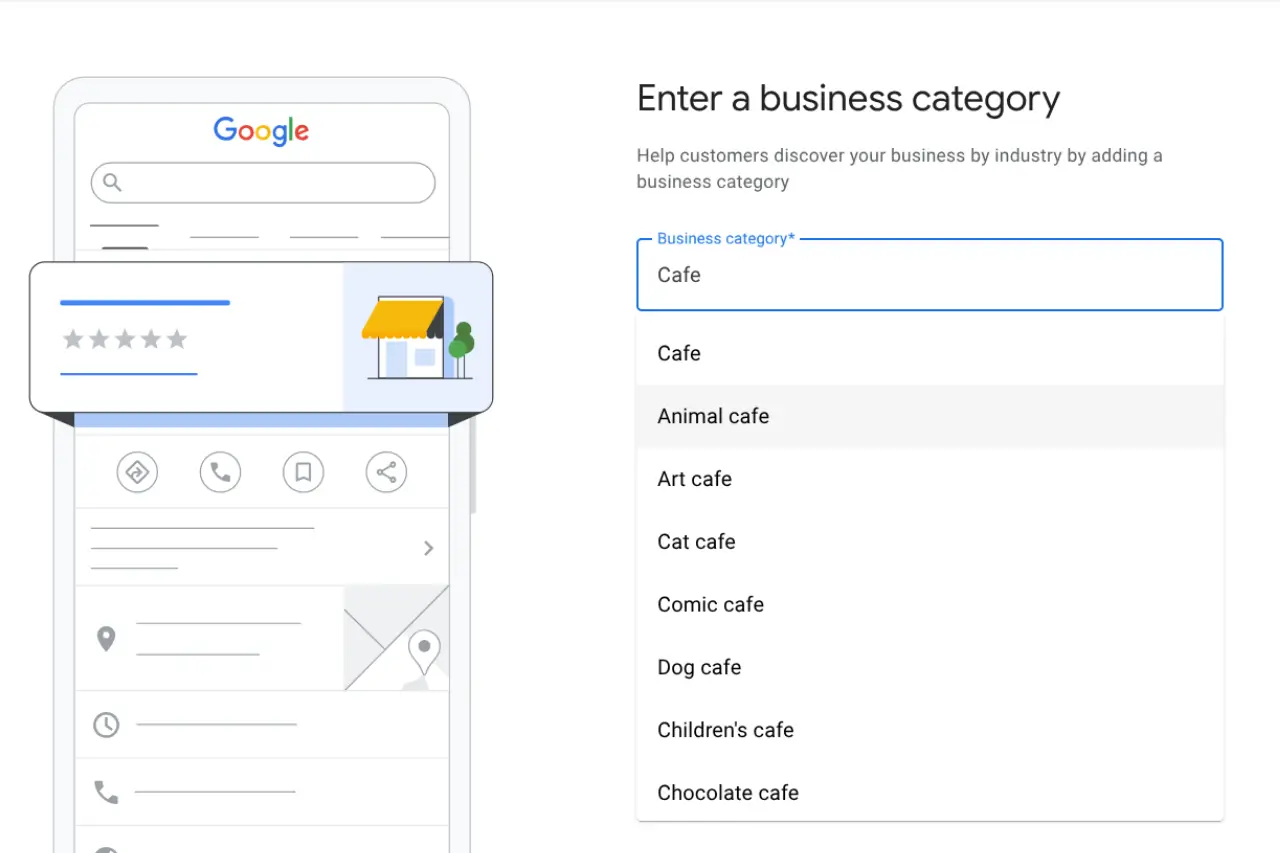
- Add your business address

- Confirm if your business is already on Google Maps
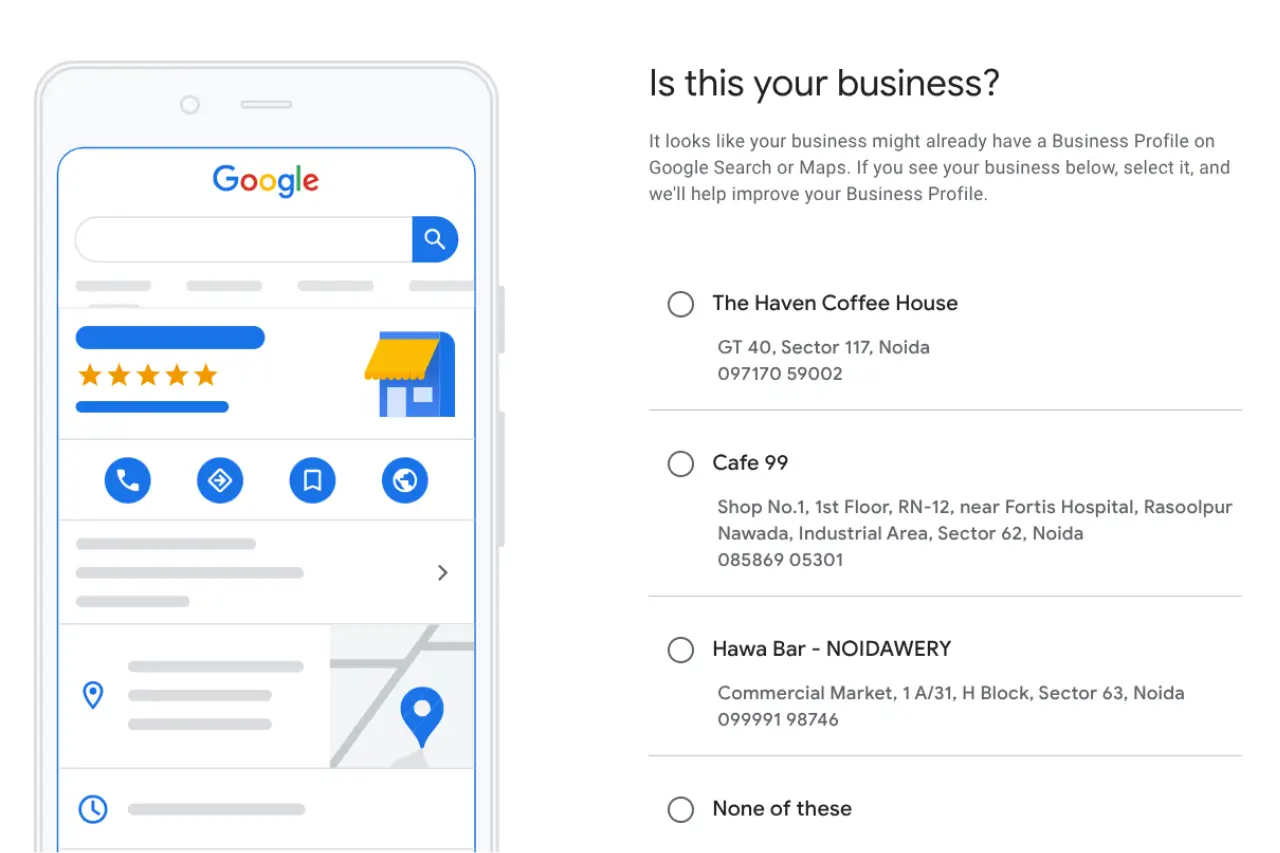
- Pin the exact location
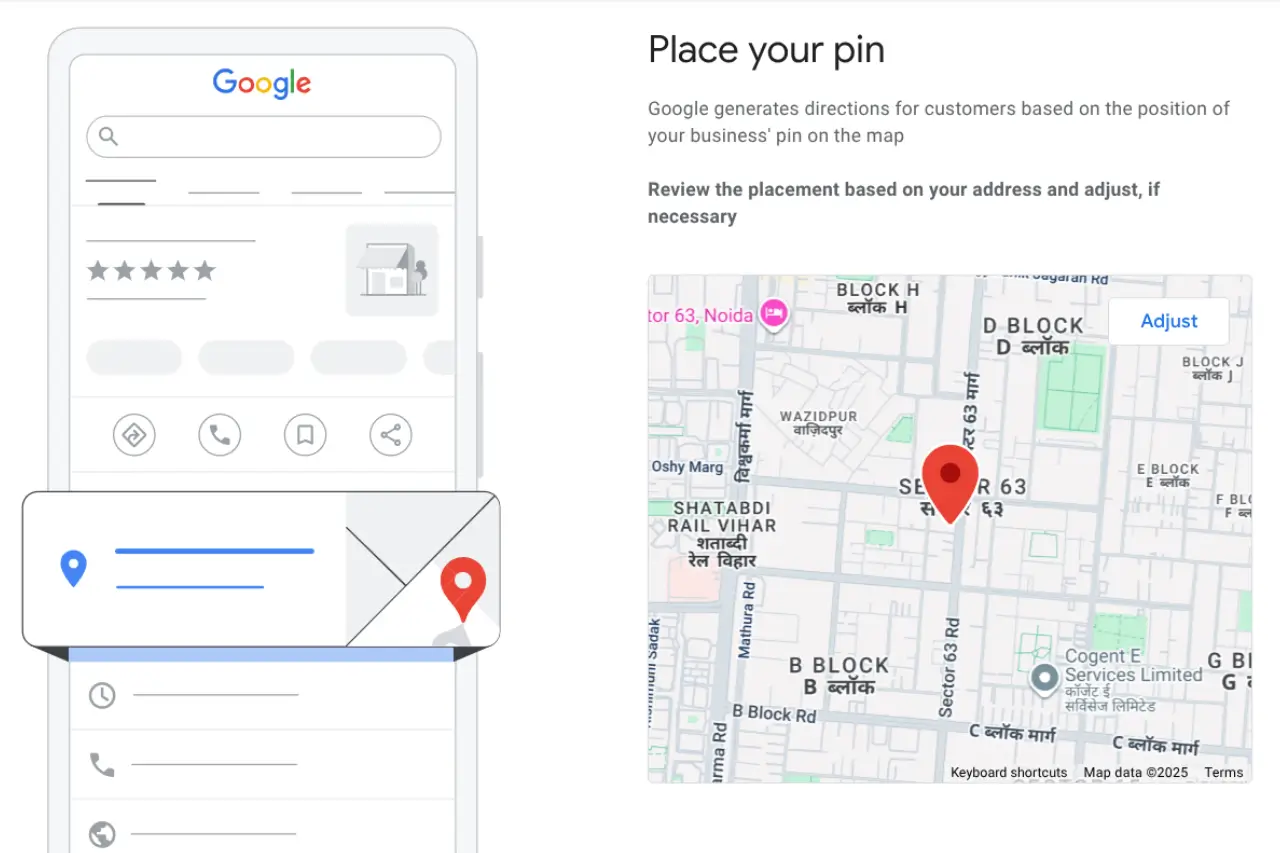
- Add contact details

- Continue to terms and conditions

- According to a report from Birdeye, only 64% of businesses have verified their Google Business Profiles, meaning 36% are missing out on critical visibility.
- Step 2: Conquer the Verification Hurdles
- This is the most critical step. You will likely be asked to verify your location via a postcard mailed to your address, a phone call, or an email. An unverified profile is invisible. There are no shortcuts here; this process proves to Google you are a legitimate, physical business.
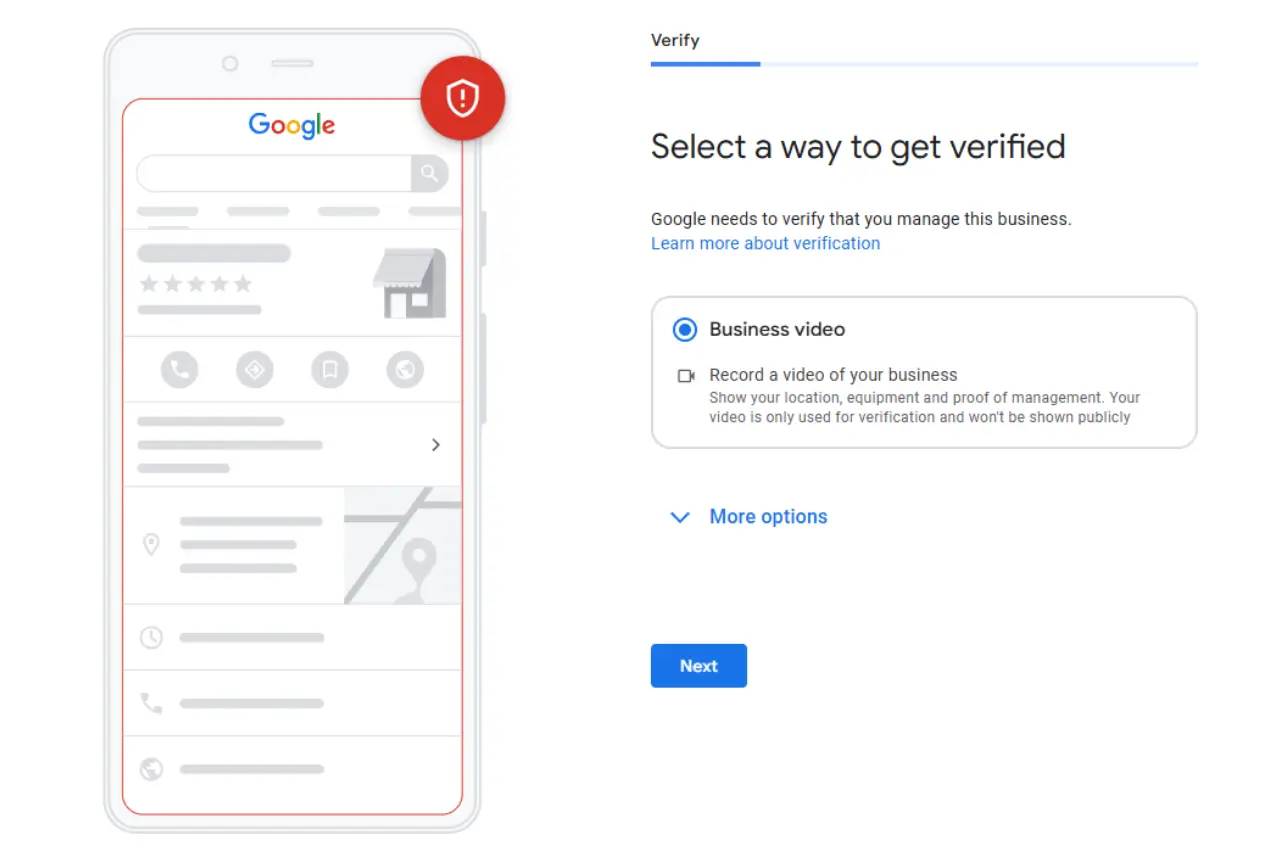
- Currently, 83% of companies in the Property Management sector have verified their profiles, the highest rate of any industry.
- Step 3: Set Your "Core Identity"
- NAP Consistency Your Name,Address, and Phone Number. This must be 100% identical across all your online directories (your website, Facebook, Yelp, etc.). AI cross-references this data to build trust. Any variation creates confusion and erodes that trust.
Why? Research shows that NAP inconsistency is the most common issue affecting local search rankings, with 41% of businesses showing inconsistent listings. More critically, 80% of consumers are confused by and distrust businesses with inconsistent names or contact details online. - Choose Your Primary Category: This is the most important single setting in your profile. It dictates all other features available to you (like specific attributes, service menus, or booking buttons). Be specific. Don't choose"Restaurant" if you are a "Pizza Restaurant".
Local search experts agree that the primary category is the #1 local rankingfactor for Google Business Profile. - Add Secondary Categories: Add other relevant categories without "keyword stuffing." If you are a "Pizza Restaurant" (Primary), you can add "Italian Restaurant" and "Food Delivery" as secondary categories.
- NAP Consistency Your Name,Address, and Phone Number. This must be 100% identical across all your online directories (your website, Facebook, Yelp, etc.). AI cross-references this data to build trust. Any variation creates confusion and erodes that trust.
The 7-Point Google Business Profile Optimization Plan for AI Visibility
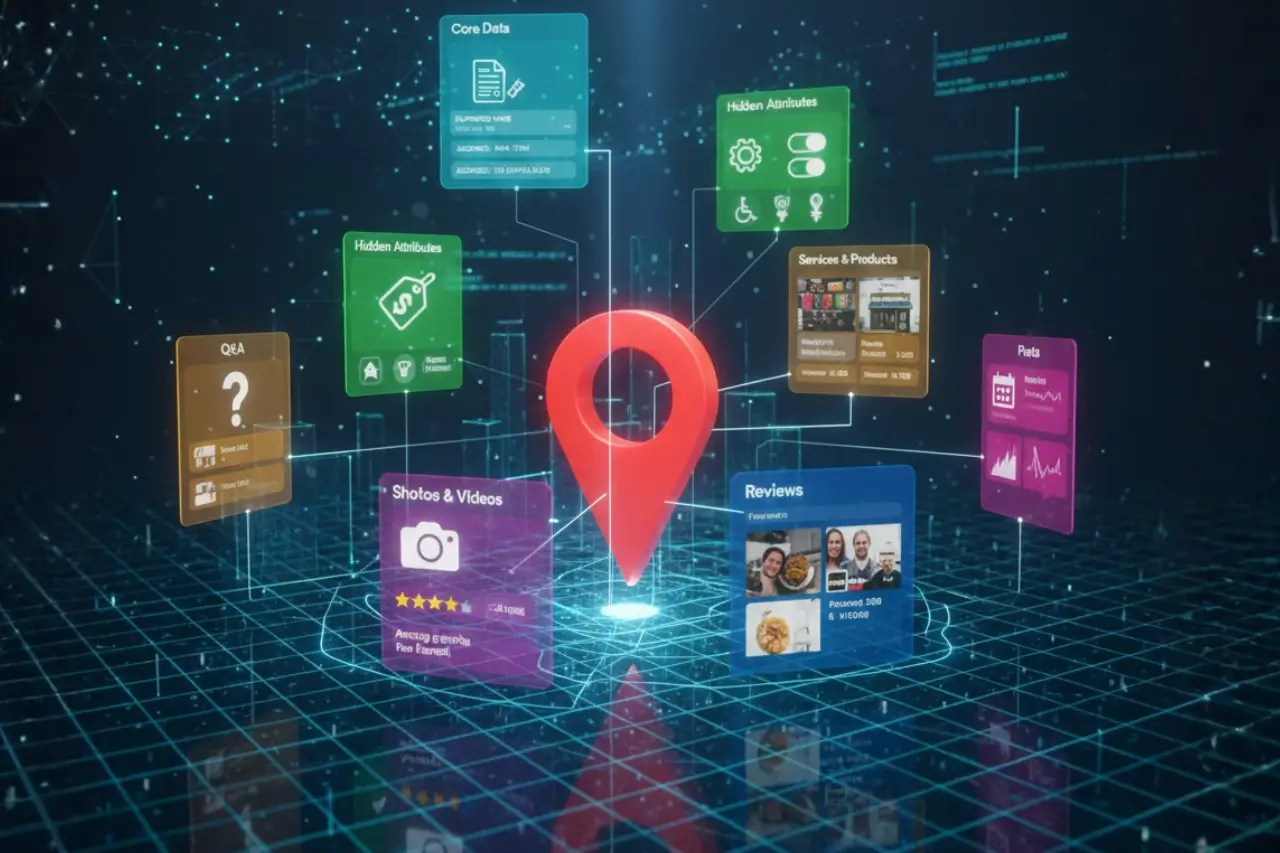
This is the high-intent core of the playbook. We've integrated the most critical techniques into a full "tip-to-toe" workflow.
Technique 1: Master Your Core Data (The "Who, What, Where")
Why it Matters for AI: AI needs raw, structured data to answer factual questions. This is your business's "fact sheet."
Action Plan:
- Business Description: Write this for a human, not a bot. Answer "Who are you?" "What do you do?" and "Why should customers choose you?" in a natural, conversational tone. You have 750 characters; use them to convey your value.
- Hours & Special Hours: This is crucial. AI pulls this data for "open now" queries. Fill out your regular hours and all special hours for holidays and events. An "hours might differ" warning from Google is a sign of a "low-trust" profile. Remember: 54% of smartphone users search for business hours, and 53% search for directions.
Technique 2: Master Your "Hidden" Data (Attributes)
Why it Matters for AI: AI thinks in these structured data points. Users ask conversational questions like, "Find me a woman-owned coffee shop with Wi-Fi and outdoor seating." Attributes are the only way you can be the answer to that query.
Action Plan:
Go to your GBP dashboard now. Review every single "Attribute" available for your category and check off everything that applies. This is the fastest way to give AI-specific, factual answers that can be surfaced in voice search and AI Overviews. This includes:
- Accessibility (e.g., "Wheelchair accessible")
- Amenities (e.g., "Has Wi-Fi," "Restroom")
- Offerings (e.g., "Serves coffee," "Online classes")
- Crowd (e.g., "Family-friendly")
- Identity (e.g., "Woman-owned," "Veteran-owned")
Technique 3: Supercharge Your Services/Products (with Detail)
Why it Matters for AI: AI needs details to answer specific user questions like "how much," "what's included," and "do you offer..."
Action Plan:
Don't just list a service ("Basic Haircut"). You must add detail.
- Bad: "Basic Haircut"
- AI-Optimized: "Men's Classic Haircut"
- Description: "A 30-minute classic haircut, including a wash, precision cut, and style. Ideal for all hair types."
- Price: "$40"
Crucially, add pricing. AI is increasingly looking for cost data to satisfy user intent. AI is increasingly looking for cost data, and58% of consumers would pay more for products from a brand with good reviews, indicating they're already doing price research.
Technique 4: Use Photos & Videos to Show Your Services
Why it Matters for AI: AI doesn't just look at dots on a screen; it actually understands what's in the picture. It can identify a "clean interior," a "plated dish," or a "service in action." This provides visual confirmation of your services and quality 50% of online shoppers say images helped them decide what to buy.
Action Plan:
- Ditch generic stock photos. They scream "low-effort."
- Upload high-quality, real photos of: your storefront (for recognition), your team (for trust), your products, and your services in action.
- Add new photos regularly. This signals to Google that you are an active, current business.
According to recent analysis, verified Google Business Profiles with 15+ photos per location saw stronger engagement across all customer actions.
Technique 5: Turn Reviews into AI-Fuel
Why it Matters for AI: AI Overviews love to summarize customer sentiment. You've seen it: "Reviewers often mention the friendly staff and the amazing pasta." Your reviews are the raw material for that summary.
Action Plan:
- Encourage Reviews: Ask customers to be descriptive. A review that says "Great service" is good. A review that says "Sarah was incredibly helpful in finding the right hiking boots for my trip" is AI gold. Currently,businesses in the top three positions receive reviews that are just under 350 words in lengthwhen sorted by relevance.
Respond to All Reviews:Respond to All Reviews: This is non-negotiable. In your response, naturally restate your business values or services.
Example Response: "Thanks, John! We're so glad you enjoyed our [specific dish/service]. We pride ourselves on using fresh, local ingredients and are thrilled you noticed. We look forward to seeing you again!"
Why respond? Businesses that respond to reviews are seen as 1.7X more trustworthy than businesses that don't. However, 53% of consumers expect companies to respond to negative feedback within one week, and one in three expect a response within three days or less.
Technique 6: Pre-Seed Your Q&A (Feed the AI)
Why it Matters for AI: This section is a goldmine for AI because it directly reflects real-world queries. AI models are trained on question-and-answer formats.
Pro-Tip:
- Go to Google and search for your top services (e.g., "landscaper in Brooklyn"). Look at the "People Also Ask" box.
- Take those exact questions (e.g., "How much does regular lawn maintenance cost?" "Do you offer drought-tolerant planting?") and add them to your own GBP Q&A section.
- Write clear, comprehensive, non-salesy answers for each. You are literally pre-loading the AI with the exact answers you want it to give.
Technique 7: Activate GBP Posts for "Right Now" Relevancy
Why it Matters for AI: Posts signal real-time activity. AI wants the most current information, not what was true six months ago.
Action Plan:
Use "Offer" or "Update" post types to answer timely, conversational questions.
- Good Post: "Our Spring Sale is Here"
- AI-Optimized Post: "Wondering about our spring hours? We're now open until 8 PM, Tuesday through Sunday. Plus, our Spring Sale is on! Get 20% off all [specific service or product] until April 30th."
This post directly answers "What are your spring hours?" and "Do you have any sales right now?"
Common GBP Mistakes That Make You Invisible to AI

Marketers know that avoiding errors is as important as optimization. These common "old SEO" habits actively hurt your ability to be a trusted AI source.
Mistake 1: Keyword Stuffing Your Business Name.
- The Mistake: "Joe's Plumbing - Best Plumber in New York, 24/7 Service"
- Why it Hurts AI: This is a massive red flag. It breaks NAP consistency (your real name is "Joe's Plumbing") and signals to Google that you are a low-quality spammer, not a trustworthy entity. Remember, 41% of businesses already have inconsistent listings don't add to the problem.
Mistake 2: Using P.O. Boxes or Virtual Addresses.
- The Mistake: Using a Regus office or P.O. Box to look "local."
- Why it Hurts AI: Google is a local directory. It needs to verify a real, physical location where customers can meet. This is a primary cause of GBP suspensions.
Mistake 3: Ignoring Q&A or Reviews.
- The Mistake: Failing to address spammy Q&As or negative reviews
- Why it Hurts AI: Let me be blunt: An unmanaged GBP profile is the digital equivalent of a physical storefront with graffiti on the walls and a 'Closed' sign hanging crookedly." It signals to AI that your business is unmanaged or "low-quality."
Mistake 4: Ignoring NAP Inconsistency.
- The Mistake: Your GBP says "Main St." but your website says "Main Street." Your GBP has a local number, but your directory listings have an 800-number.
- Why it Hurts AI: This confusion is the number one trust-killer. The impact is real: Businesses with uniform NAP information receive 70% more calls.
Mistake 5: "Set It and Forget It" Mentality.
- The Mistake: You set up your profile in 2021 and never touched it again.
- Why it Hurts AI: If your Google Business Profile hasn't been touched in over six months no new photos, posts, or answered questions, AI sees it as a ghost town. It assumes you're either closed or don't care. But businesses that stay on top of their profiles? They're getting 70% more foot traffic.
Beyond GBP: Connecting Your Website for Total AI Trust
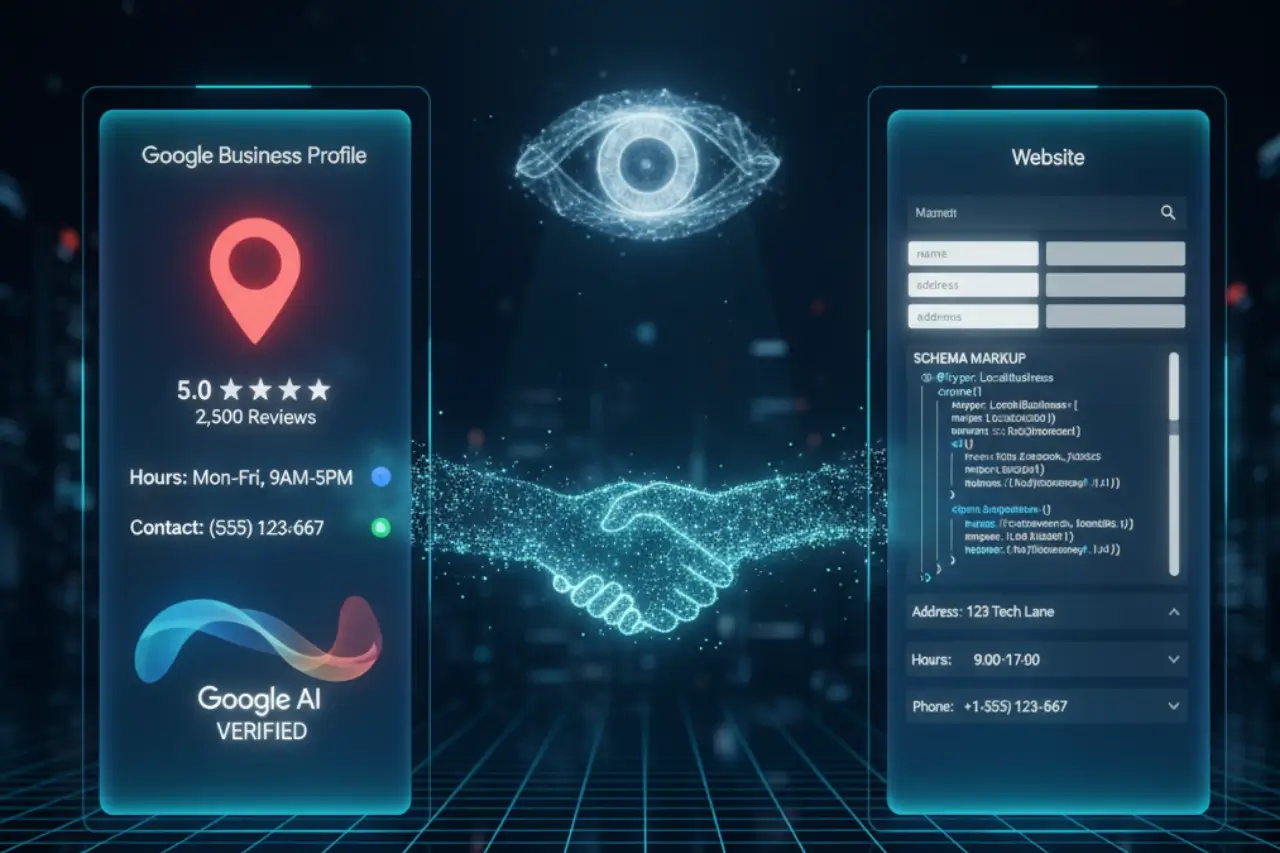
Your GBP profile doesn't exist in a vacuum. Google's AI cross-references your information with your website to confirm its accuracy. This is the core of E-E-A-T (Experience, Expertise, Authoritativeness, Trust).
"E-E-A-T is not just for your blog posts; Google applies these concepts to your entire online presence, including your GBP. Your profile is a key indicator of your real-world Experience and Trust."
Want to go deeper? I've written a comprehensive guide on Entity Optimization and E-E-A-T that explains exactly how to build this total trust.
Action Plan: The GBP-Website "Handshake"
- Link to the Right Page: Your main GBP "Website" link should go to your homepage. Your GBP "Services" and "Products" should link directly to those specific service or product pages on your site, not just the homepage.
- Mirror Your Data: The services, hours, phone number, and descriptions on your website must match what's on your GBP. If your website says you close at 5 PM but GBP says 6 PM, AI will trust neither.
- Add Local Business Schema: This is a brief, non-technical explanation. "Schema" is a piece of code you add to your website that "translates" your business info (like your hours, address, and service list) into a perfect, structured language that Google's AI can read and understand instantly.
How to Know If It's Working (Measuring AI Success)

This is how you prove your ROI. The goal isn't "rankings"; it's high-intent actions.
Understanding your impact is crucial. 80% of local searches convert into customers, compared to the 2-3% conversion rate of most online advertising. Local search is incredibly valuable.
- Monitor GBP Insights: Go to your "Performance" report. Look at the "Queries used to find your business." You want to see a shift from broad keywords (e.g., "plumber") to more specific, long-tail, or conversational queries (e.g., "plumber near me that fixes burst pipes"). According to Birdeye data, each Google Business Profile drives around 200 clicks a month on average. If you're below this, there's room for improvement.
- Track Performance Metrics: The ultimate goal is an increase in direct actions. Your GBP "Performance" dashboard tracks these high-intent metrics:
- Calls
- Direction Requests
- Website Clicks
- Self-Testing: Act like a customer. Go to Google (or use voice search) and ask AI-driven questions about your business. "Does [Your Business] have parking?" "Is [Your Business] open on Sundays?" "Does [Your Business] offer [your specific service]?" See if the answer is accurate and pulled from your profile.
Your 15-Minute AI-Readiness Checklist
Use this scannable checklist to get started today.
- [ ] Verify: Is your profile 100% verified?
- [ ] Core Identity: Is your Name, Address, and Phone number identical to your website?
- [ ] Hours: Are your regular AND holiday hours 100% complete for the next 3 months?
- [ ] Attributes: Have you filled out at least 5 relevant attributes (e.g., "Wi-Fi," "Accessibility")?
- [ ] Q&A: Have you pre-seeded one common question from "People Also Ask"?
- [ ] Reviews: Have you replied to your last 3 reviews (good and bad)?
- [ ] Photo: Have you uploaded one new, high-quality photo in the last 30 days?
- [ ] Post: Have you made one "Update" or "Offer" post this week?
Conclusion: Your GBP Is Your New Homepage

In the age of AI, your Google Business Profile is no longer just a listing. It is your primary, front-facing data source. It is your AI "homepage."
The businesses that win in the next decade won't just be on Google; they will be the answer. Their data will be the most direct, trustworthy, and helpful source for AI.
Avinash Tripthi
GetCito, formerly “AI Monitor”By following this "tip-to-toe" playbook, you've moved beyond "ranking" and have built a foundation of trust with Google's AI. You have positioned your business to be the first and best answer for your next high-intent customer.
"Go back to the 15-Minute AI-Readiness Checklist, grab the 15-Minute AI-Readiness Checklist, and start today. Need a strategic partner to build your AI-first action plan? [Book a 1-on-1 consultation with me.]"
